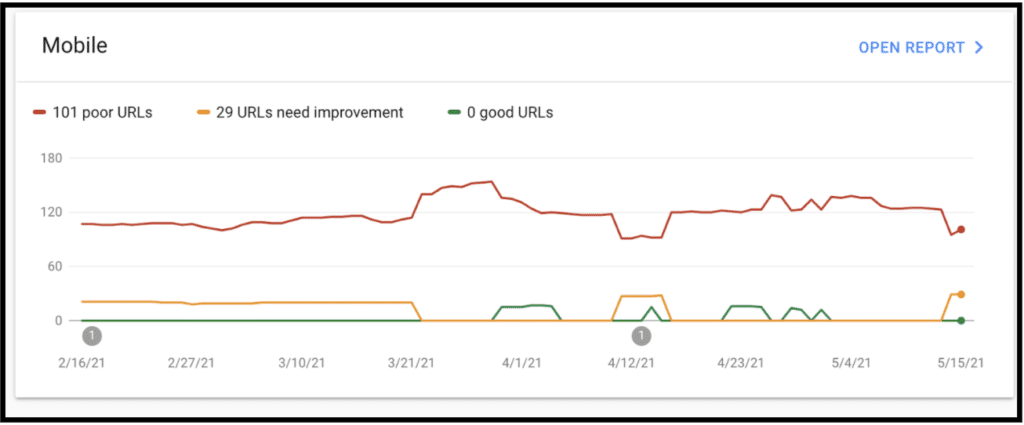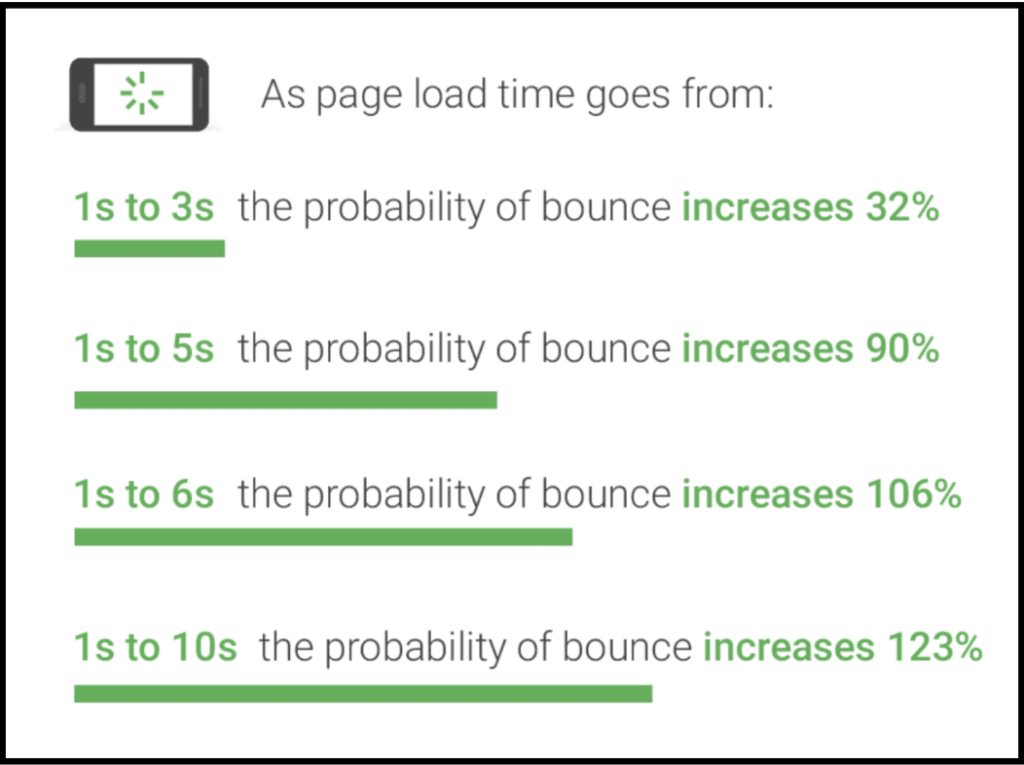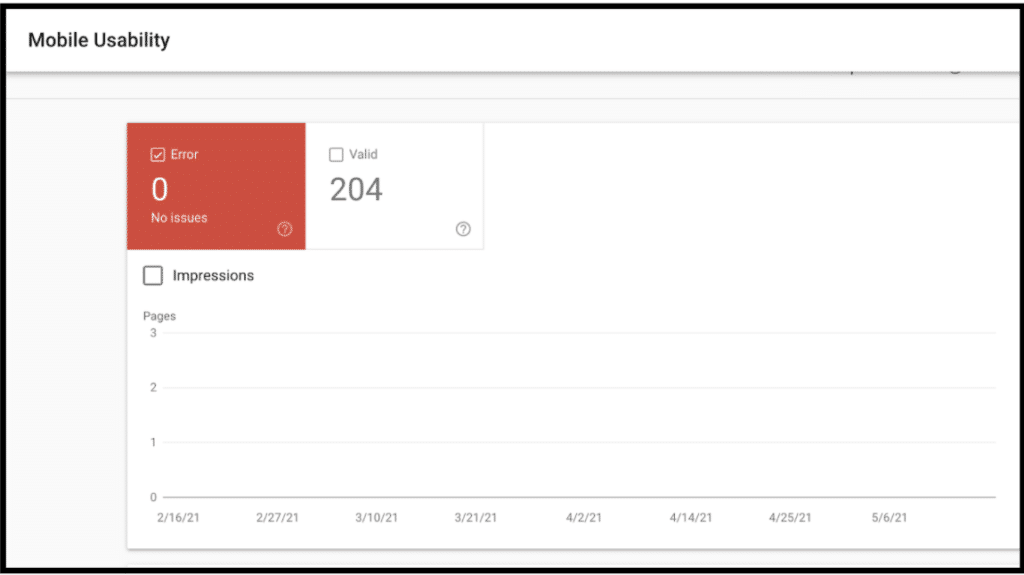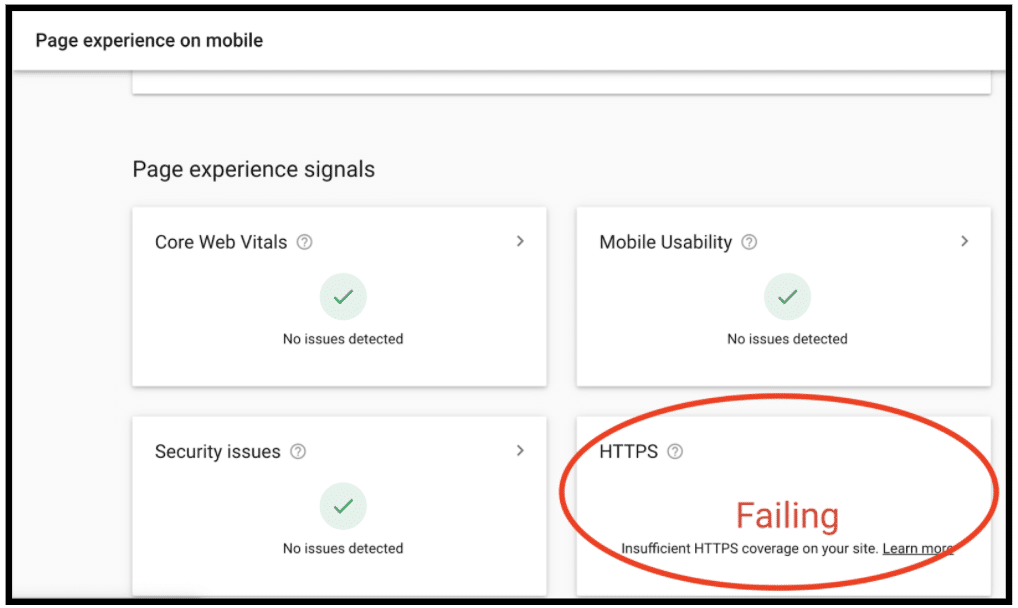The new Google algorithm update is rolling out in June and as always, it’s shaking up the SEO community.
This time, however, there’s a twist:
Instead of relying on speculation of how the update will affect your site from prominent tech bloggers, Google is actually telling you exactly what’s going to happen and how to avoid suffering penalties.
In this blog, I’ll share what’s going to change in this Google algorithm update and how to be prepared for it.
1. Core web vitals
If you don’t use Google Search Console already, it’s high time to start now. Many focus points of the Page Experience update such as Core Web Vitals can be directly tracked from your Search Console.
The Core Web Vitals overview should look something like this.

By clicking the “open report” on both desktop and mobile, you should be able to see all the issues you need to fix before the update rolls out.
Core web vitals gets in the heart of user experience by evaluating the content load time, interactivity speed, and visual stability of the site. To assess this, it uses three metrics: LCP (Largest contentful paint), First input delay and Cumulative layout shift.
- LCP measures how long the main content of the page takes to load. You should aim for LCP of 2.5 seconds or less.
- First input delay assesses how long it takes for the page to become interactive. The ideal is anything less than 100ms.
- Cumulative layout shift measures the unintentional layout shift of visual content. This should be 0.1 or less. An unacceptable CLS could be for example a sudden layout change that makes the user accidentally click the wrong button.
Make sure all the issues get fixed in your search console and then double-check that your page speed here.
However, the algorithm update shouldn’t be the only reason to optimize your page speed. Every second you improve the page load time can lead to more conversions as less people bounce off your page.

Source: https://www.singlegrain.com/seo/google-page-experience-update/
2. Mobile usability
We all know that mobile traffic has skyrocketed the past few years, and this isn’t the first Google update to address mobile usability. However, while optimizing your site for mobile gave you an SEO competitive advantage previously, strong mobile compatibility is now simply an expectation for every page, with pages that aren’t mobile compatible suffering in how they’re ranked.
You can assess your mobile friendliness by using this tool and find out all the errors you need to fix under the tab “mobile usability” in the Search Console.

The mobile usability feature in the search console assesses the readability of content and accessibility of the links and on-page elements on a mobile device.
3. Security issues
The new update focuses not only on great website usability, but on a safe browsing experience as well.
Once again, you can find the issues you need to fix in Google Search Console under “Security and manual actions” -> “Security issues”. This will assess the safety of your website and whether it has issues such as malware, phishing and hacked content.
You can also check your security status here.

4. HTTPS
As another way to increase browsing safety, the update requires all pages to be HTTPS. HTTPS is a secure and much safer protocol for sending data between a web browser and a website than HTTP.

Therefore, you need to find the HTTP pages on your site and change them to HTTPS.
You can find the pages in Search Console by opening up the Performance report and adding a filter for URLs starting with “http://”. This shows you the first 1000 HTTP URLs on your site that people are finding in Google. If your http pages aren’t ranking for SEO yet, you can use another tool such as Screaming Frog to locate them.
To change your sites from http to https you need to get a SSL certificate that’s appropriate for your website. For example, if you’re collecting online payments or other delicate information, you need a more comprehensive SSL certificate.
5. Ad experience
Many people’s dreams are coming true as intrusive ads are becoming history.
With the new algorithm update, Google is starting to penalize sites using interruptive and distracting advertising techniques, such as:
- Pop Ups that cover the main content
- Interstitial ads that the user has to dismiss before accessing the main content
If Google detects distracting techniques, it can lower the ranking of your whole website. However, there’s no need to panic. You can still have pop-ups and other ads, if they are:
- Legal obligation such as accepting cookies or verifying age
- Not obstructing main content on your site or distracting the user experience
Here’s an example of ads that are still allowed.
Wrapping Up
The June 2021 Google algorithm update is all about website usability and safety. How the users perceive your website is now what matters.
So don’t wait until the update is already affecting your site. You finally have the chance to be prepared so make sure you take advantage of it! If you’re unsure how to fix all these issues yourself, you can always hire a SEO specialist to do it for you.
Besides, doing the changes you don’t only ensure your traffic doesn’t drop but will result in better website security, improved functionality and happier prospects.







